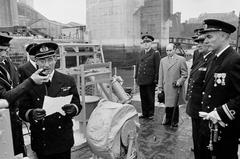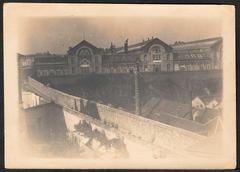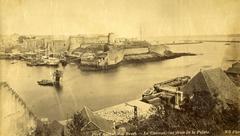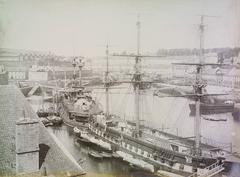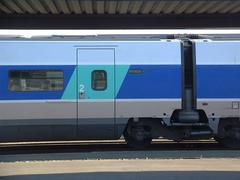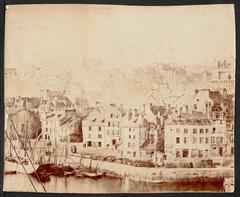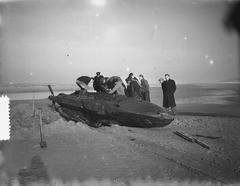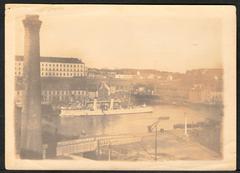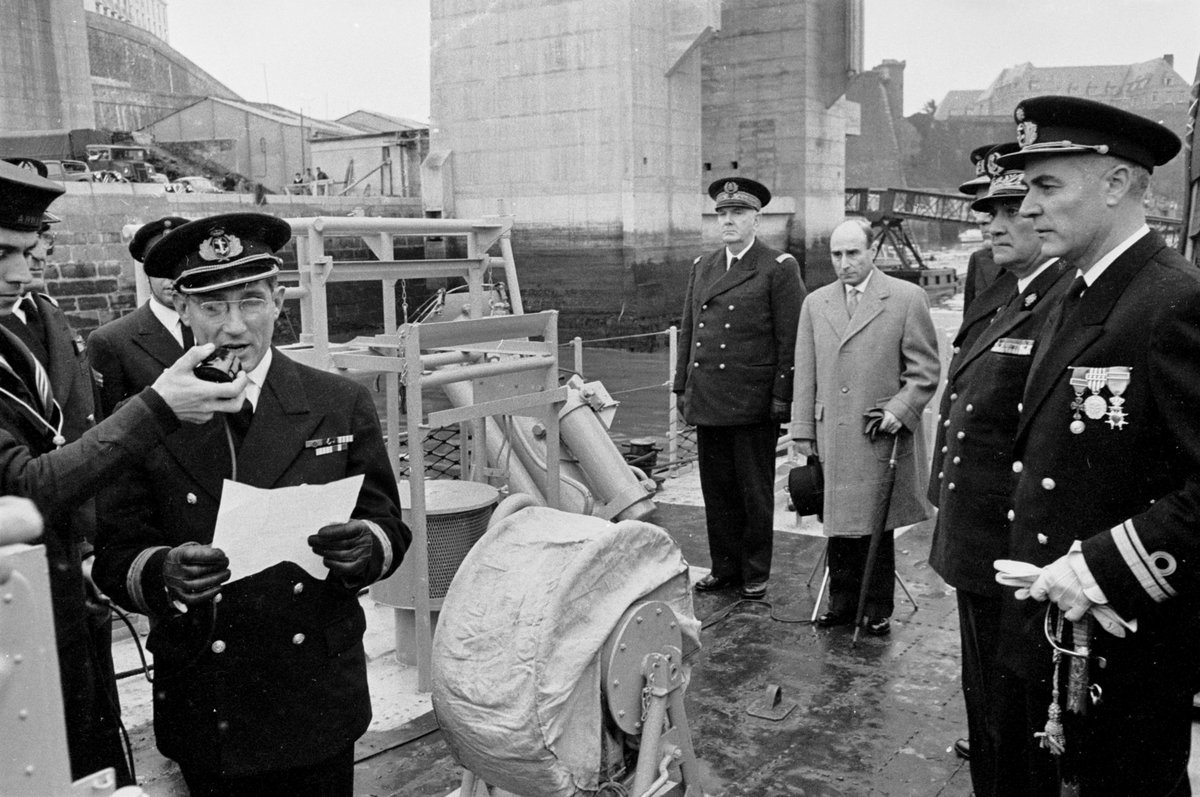
Pont de Recouvrance Visiting Hours, Tickets, and Historical Significance
Date: 23/07/2024
Introduction
The Pont de Recouvrance, an iconic vertical-lift bridge in Brest, France, stands as a symbol of resilience, innovation, and unity. Constructed between 1950 and 1954, this engineering marvel was built to replace the Pont National, which was destroyed during World War II. It spans the Penfeld River, connecting the city center to the historically significant Recouvrance district (Brest History). Designed by French engineer Jean Grattesat, the Pont de Recouvrance was part of the extensive post-war reconstruction efforts in Brest, a city heavily bombed during the war. This bridge, with its unique vertical-lift mechanism, not only restored a vital transportation link but also represented the city’s determination to rebuild and modernize (Structurae).
Architecturally, the Pont de Recouvrance is a masterpiece of mid-20th-century engineering, featuring massive steel structures and a robust vertical-lift mechanism powered by counterweights and electric motors. Its construction marked a new beginning for Brest, symbolizing the city’s recovery and renewal after the war (Engineering Timelines). Today, it continues to play a crucial role in Brest’s infrastructure, supporting both local businesses and the maritime economy (Port of Brest).
This comprehensive guide will delve into the rich history, architectural significance, and cultural impact of the Pont de Recouvrance, providing practical information for visitors, including visiting hours, ticket prices, travel tips, and nearby attractions. Whether you are a history buff, a photography enthusiast, or simply looking to explore Brest’s maritime heritage, this guide has something for everyone.
Table of Contents
- Origins and Construction
- Architectural Significance
- Role During World War II
- Post-War Reconstruction and Modernization
- Cultural and Historical Impact
- Modern-Day Significance
- Visiting Hours and Ticket Information
- Travel Tips
- Nearby Attractions
- Accessibility
- FAQ
Origins and Construction
The Pont de Recouvrance, an iconic vertical-lift bridge in Brest, France, was constructed between 1950 and 1954. This engineering marvel was built to replace the older Pont National, which was destroyed during World War II. The bridge spans the Penfeld River, connecting the city center to the Recouvrance district, a historically significant area known for its naval heritage.
The design and construction of the Pont de Recouvrance were spearheaded by the French engineer Jean Grattesat. The bridge’s construction was part of the post-war reconstruction efforts in Brest, a city heavily bombed during the war. The bridge was officially inaugurated on July 17, 1954, and has since become a symbol of the city’s resilience and recovery.
Architectural Significance
The Pont de Recouvrance is notable for its vertical-lift mechanism, which allows the central span to be raised to a height of 64 meters, enabling large naval vessels to pass underneath. At the time of its completion, it was the largest vertical-lift bridge in Europe. The bridge’s total length is 88 meters, with the lift span measuring 87.5 meters. The structure is supported by two massive towers, each standing 70 meters tall.
The bridge’s design reflects the industrial aesthetic of the mid-20th century, characterized by its robust steel framework and functional form. The vertical-lift mechanism is powered by counterweights and electric motors, a testament to the engineering advancements of the era.
Role During World War II
Before the construction of the Pont de Recouvrance, the Pont National served as the primary crossing over the Penfeld River. However, during World War II, Brest was a strategic naval base for the German Kriegsmarine, making it a target for Allied bombings. The Pont National was destroyed in 1944 during these bombings, severing a crucial link between the city center and the Recouvrance district.
The destruction of the Pont National highlighted the need for a more resilient and strategically designed bridge. The Pont de Recouvrance was conceived not only as a replacement but also as a symbol of post-war reconstruction and modernization.
Post-War Reconstruction and Modernization
The post-war period in Brest was marked by extensive reconstruction efforts, with the Pont de Recouvrance playing a central role in the city’s redevelopment. The bridge facilitated the movement of people and goods, contributing to the economic revival of the region. Its construction was part of a broader urban renewal plan that included rebuilding the city’s infrastructure, housing, and public spaces.
The bridge’s completion in 1954 was a significant milestone in Brest’s recovery. It not only restored a vital transportation link but also represented the city’s resilience and determination to rebuild. The Pont de Recouvrance quickly became a symbol of modernity and progress, reflecting the spirit of a city rising from the ashes of war.
Cultural and Historical Impact
Over the decades, the Pont de Recouvrance has become an integral part of Brest’s cultural and historical landscape. It is featured prominently in local art, literature, and photography, symbolizing the city’s maritime heritage and industrial prowess. The bridge is also a popular tourist attraction, drawing visitors who are fascinated by its engineering and historical significance.
The bridge’s role in connecting the city center to the Recouvrance district has also had a profound impact on the social and cultural fabric of Brest. The Recouvrance district, known for its naval base and shipyards, has a rich history that is closely tied to the city’s maritime identity. The Pont de Recouvrance serves as a physical and symbolic link between these two important areas, fostering a sense of unity and continuity.
Modern-Day Significance
Today, the Pont de Recouvrance remains a vital transportation artery in Brest, accommodating both vehicular and pedestrian traffic. It continues to function as a vertical-lift bridge, with its central span being raised several times a year to allow naval vessels to pass. The bridge’s maintenance and operation are overseen by the city of Brest, ensuring its continued functionality and preservation.
In recent years, the bridge has also been the focus of various cultural and community events. It is often illuminated during festivals and public celebrations, highlighting its status as a beloved landmark. The Pont de Recouvrance stands as a testament to Brest’s rich history, engineering ingenuity, and enduring spirit.
Visiting Hours and Ticket Information
The Pont de Recouvrance is accessible to visitors year-round. There are no specific visiting hours as the bridge is part of the city’s transportation network and is open to the public at all times. No tickets are required to visit the bridge.
Travel Tips
For those planning to visit the Pont de Recouvrance, the best times are early morning or late afternoon when the lighting is ideal for photography. The bridge is easily accessible by public transportation, and there are several parking options nearby for those driving.
Nearby Attractions
Brest offers many other historical and cultural sites worth visiting. Nearby attractions include the Brest Castle, the National Maritime Museum, and the Tanguy Tower. These sites provide further insights into the rich naval history and heritage of the region.
Accessibility
The Pont de Recouvrance is accessible to all visitors, including those with disabilities. There are pedestrian pathways on both sides of the bridge, and the lift mechanism ensures that the bridge can accommodate individuals with mobility challenges.
FAQ
What are the Pont de Recouvrance visiting hours?
The bridge is open to the public at all times as it is part of the city’s transportation network.
Is the Pont de Recouvrance accessible for disabled visitors?
Yes, the bridge is accessible to all visitors, including those with disabilities.
Do I need a ticket to visit the Pont de Recouvrance?
No, there are no tickets required to visit the bridge.
What are some nearby attractions to the Pont de Recouvrance?
Nearby attractions include the Brest Castle, the National Maritime Museum, and the Tanguy Tower.
Conclusion
The Pont de Recouvrance stands as a multifaceted landmark with profound significance in various domains. Its historical, architectural, cultural, economic, technological, social, environmental, tourism, educational, and symbolic importance make it an integral part of Brest’s identity. The bridge not only serves as a vital piece of infrastructure but also as a testament to the city’s resilience, innovation, and unity. Its enduring legacy continues to inspire and captivate residents and visitors alike, making it a cherished symbol of Brest’s heritage and future aspirations. Whether you’re planning a visit or simply learning about it, the Pont de Recouvrance offers a rich tapestry of stories and significance to explore. For more information on Brest’s historical sites and travel tips, visit the official Brest tourism website. Don’t forget to follow us on social media for the latest updates and events in Brest.
References
- Discover the Pont de Recouvrance - History, Visiting Hours, and More. (2024). Retrieved from brest.fr
- Exploring Pont de Recouvrance - Visiting Hours, Tickets, and Historical Significance in Brest, France. (2024). Retrieved from brest.fr
- A Comprehensive Guide to Visiting Pont de Recouvrance in Brest - Tips, History, and Nearby Attractions. (2024). Retrieved from brest.fr
